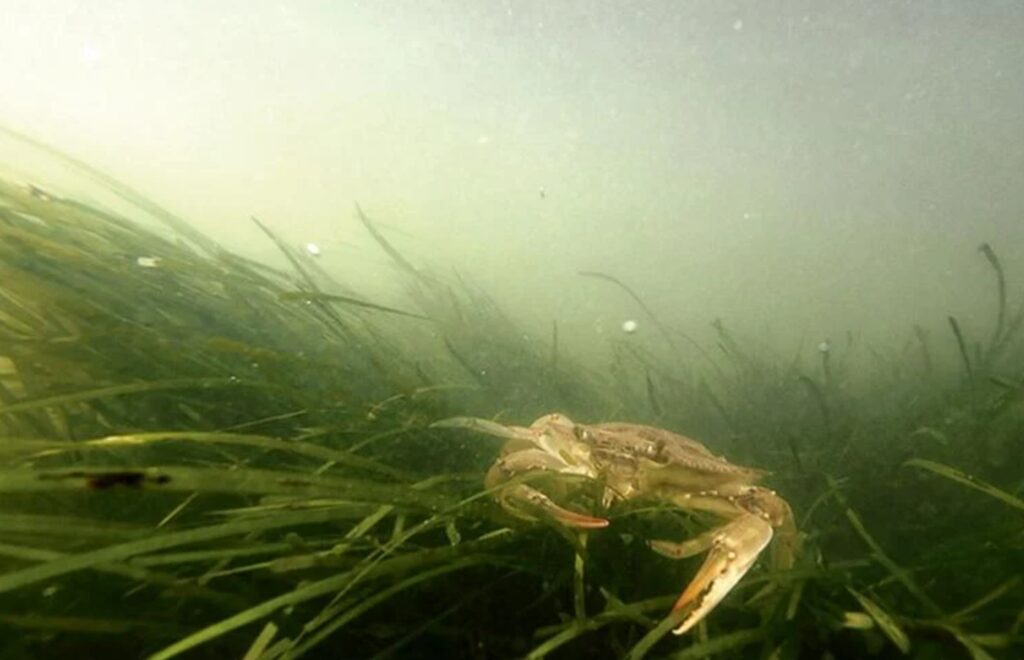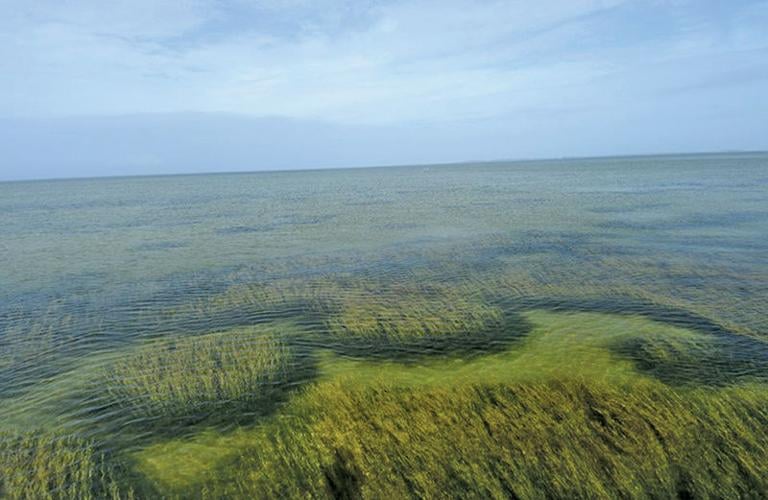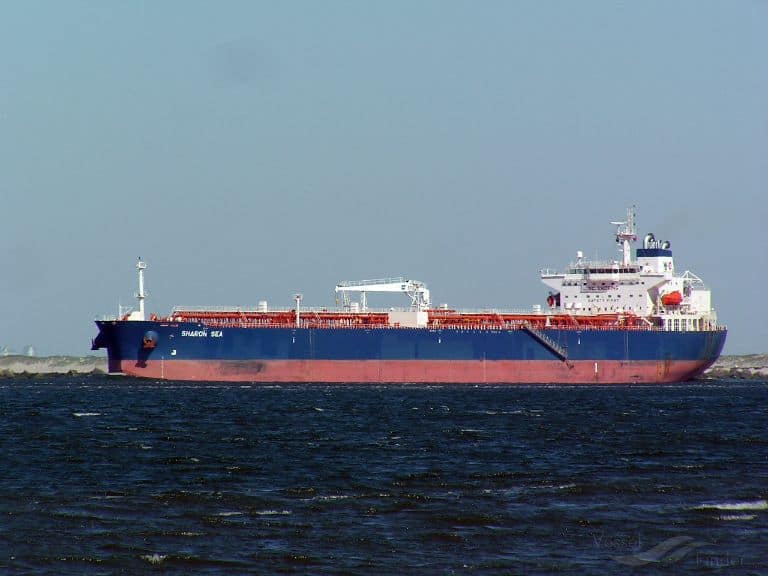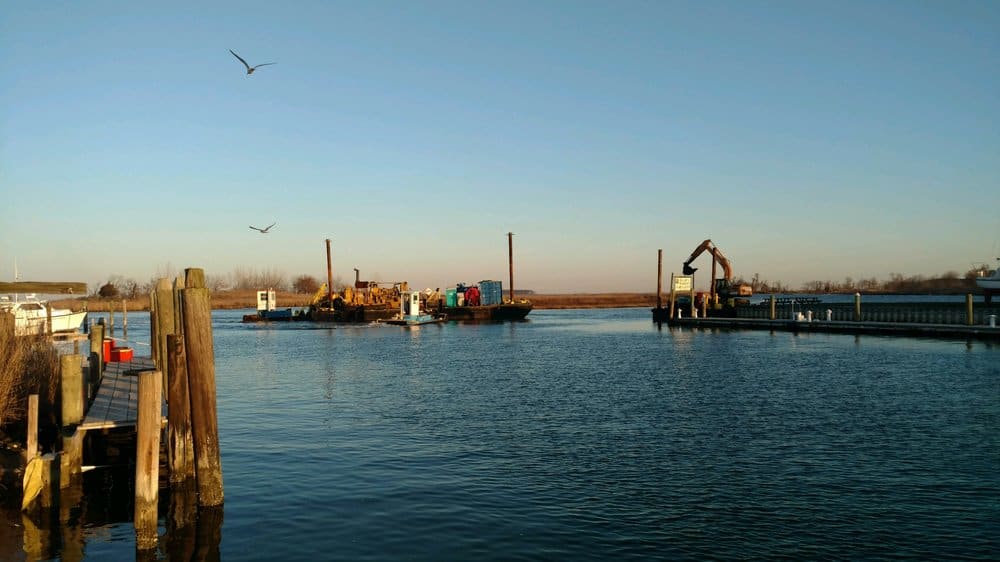Underwater grass beds in the Chesapeake Bay region expanded for the third consecutive year in 2023, reaching the seventh highest level observed in four decades of monitoring.
The news was especially good in high salinity areas of the lower Chesapeake, where underwater meadows—a critical habitat for many species—covered a greater area than had been observed in a quarter century.
The survey also found that Bay grasses greatly expanded in moderately salty areas of the mid Bay and generally remained stable in low salinity areas.
Overall, data from the annual aerial survey conducted by the Virginia Institute of Marine Science (VIMS) showed a 7 percent increase in the Bay and its tidal tributaries over 2022, with grass beds covering an estimated 82,937 acres.
That was less than the recent high of roughly 108,000 acres in 2018 but more than double the 38,228 acres observed in 1983 when the survey began.
Submerged aquatic vegetation, or SAV, provides an important refuge for juvenile blue crabs and fish, as well as food for waterfowl. Plus, they pump oxygen into the water, their roots help stabilize sediment, and their leaves buffer wave action.

They are also a closely watched indicator of Bay health because the plants require clear water to get the sunlight needed to survive. They die off when sediment and nutrient-fueled algae blooms cloud the water.
That happened most recently in late 2018 and early 2019, when heavy rains flooded the Bay with nutrients and sediment, leading to a 42 percent loss.
Because underwater grasses are so important, Bay cleanup goals are aimed in part at creating conditions that would allow 185,000 acres of grasses to return.
Chris Patrick, a VIMS scientist who oversees the survey, said the best news for 2023 was in the high salinity area, or polyhaline zone, of the lower Bay, where grasses increased for the fourth year in a row.
The roughly 21,743 acres observed there was an increase of 11 percent over 2022 and the greatest amount since 22,678 acres were counted in 1997. The polyhaline, which stretches from the Rappahannock River and Tangier Island to the mouth of the Bay.
“We’re seeing grass where we’ve never seen grass before,” Patrick said. “It’s growing very deep, and it’s growing very far out from shore.”
Mobjack Bay, a vital habitat area between the York and Rappahannock rivers, had more grass in 2023 than in the history of the survey, with about 12,000 acres.
Patrick and other scientists have been worried about the polyhaline because it is dominated by eelgrass, a species that is sensitive to high temperatures. Eelgrass has had ups and downs from year to year, but the overall trend has been downward since the late 1990s, as Bay waters warm.
Patrick said several factors seem to be helping the rebound. Water has been clearer in recent years, allowing the plants to get more sunlight and move into deeper, cooler areas. Patrick has seen eelgrass growing in water more than 9 feet deep at low tide in places a mile from shore. Grasses are more susceptible to warm water in shallow, nearshore areas.
Eelgrass is often considered the Bay’s most ecologically important SAV species. It’s the only species found in most high salinity areas, where it is especially valuable shelter for juvenile blue crabs returning to the Bay from the ocean. Unlike many aquatic grasses that die back during the winter, eelgrass provides food and shelter nearly year-round.
In the moderately salty mid-Bay region, grasses increased about 21%, with 37,961 acres. The mesohaline stretches southward from near Baltimore to the Rappahannock River and Tangier Island in Virginia, and it includes large sections of most tidal rivers.
The grass beds in Tangier Sound saw significant expansion, covering about 13,300 acres, replacing Susquehanna Flats in the upper Bay as the Chesapeake’s largest grass bed.
The mesohaline in recent decades has been dominated by widgeon grass, a species notorious for boom-and-bust cycles, rapidly expanding when water quality is good but disappearing quickly when it turns poor.
Brooke Landry, a biologist with the Maryland Department of Natural Resources and chair of the Bay Program’s SAV Workgroup, said that another species, sago pondweed, has started to move into portions of the mesohaline. It is less prone to dramatic fluctuations and could help stabilize grass beds in that area.
“We don’t know exactly why it’s taking over some areas,” Landry said, “but it’s been doing really well the last five or so years.”
The less salty upper Bay and tidal rivers had the poorest underwater grasses outlook. In this oligohaline zone, which covers a relatively small portion of the upper Bay and tidal tributaries, SAV decreased 54 percent, much of it around the Gunpowder and Middle rivers, as well as the middle Potomac.
The Bay’s freshwater tributaries grew its Bay grasses by 2 percent, keeping things steady. More than half of the 20,000 acres of potential grass habitat is in the Susquehanna Flats.
This story first appeared at bayjournal.com.



